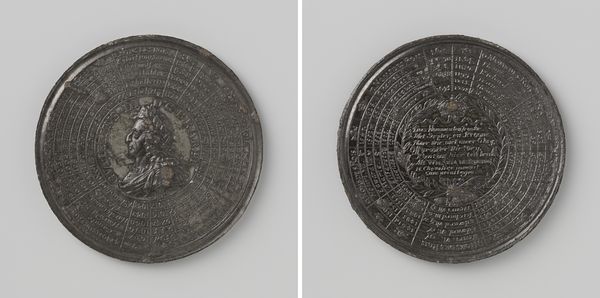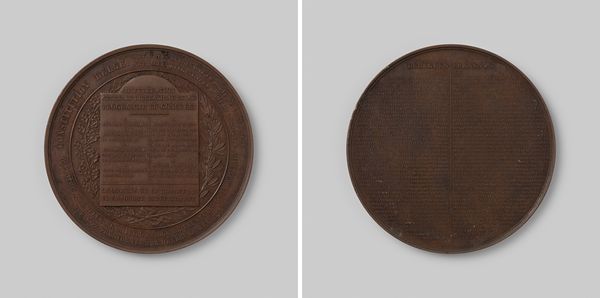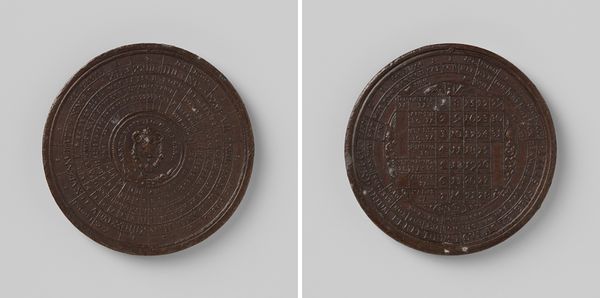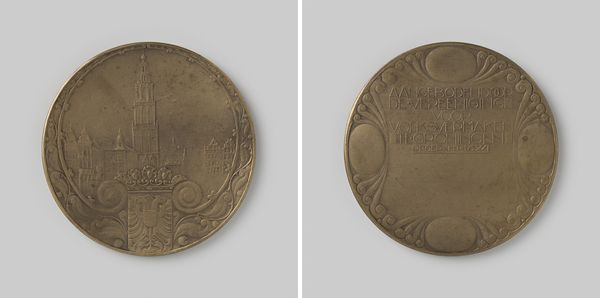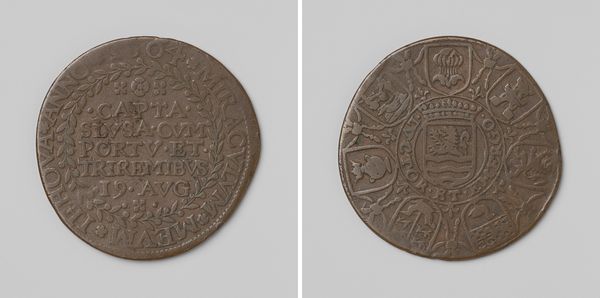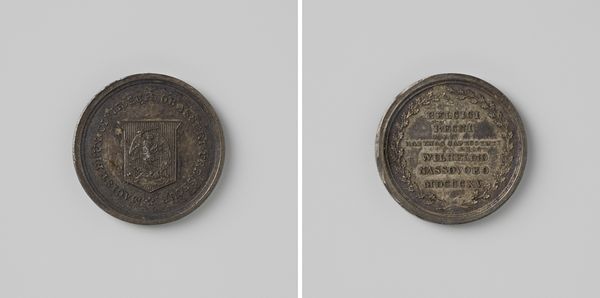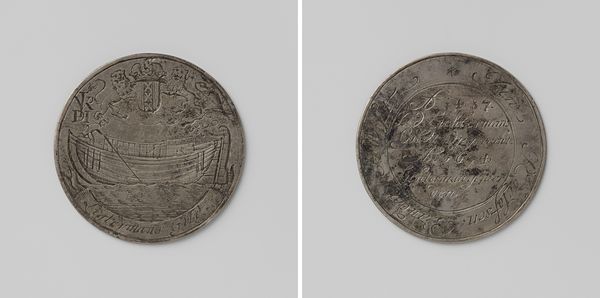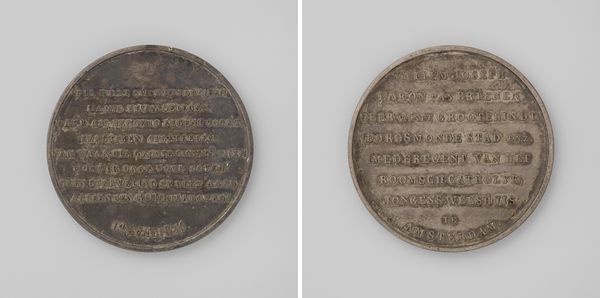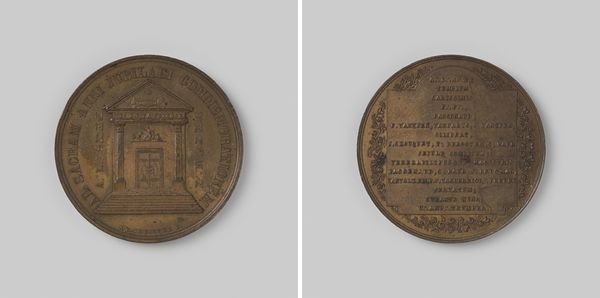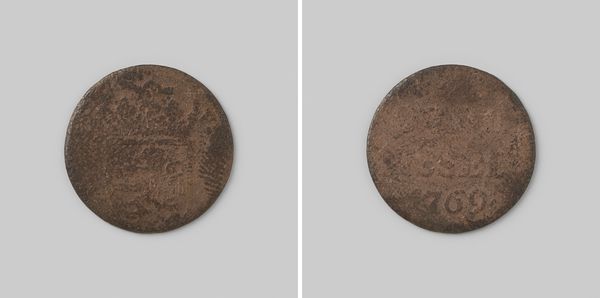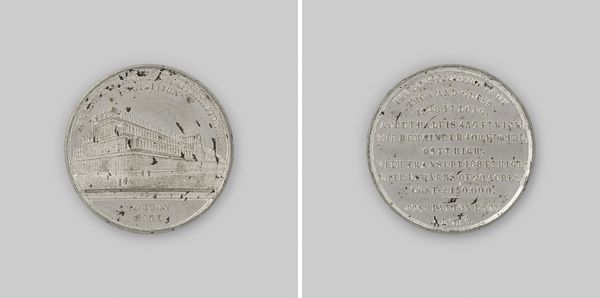
print, metal, engraving
# print
#
metal
#
decorative-art
#
engraving
Dimensions: diameter 3.8 cm, weight 14.72 gr
Copyright: Rijks Museum: Open Domain
Curator: This is a fascinating object—an English calendar medal dating back to 1766, crafted in metal and engraved by Joseph John Powell. Editor: My first impression is that the information is beautifully compacted. I’m intrigued by how the engraving teases our eyes into decoding information as aesthetic patterns. Curator: Exactly. This piece serves a dual purpose, offering practical utility with its calendar function, while also presenting layers of symbolism reflecting the culture of its time. The lettering and layout have a highly decorative feel. I notice that it notes, besides the standard days and months, religious observances and the dates for legal terms such as Hilary. Editor: Yes, there’s a palpable sense of control and order imposed onto time itself. Look at the geometric layout; it has a kind of stoic, classical harmony—with all the numerical data structured across the round plane. Curator: Absolutely. Beyond its calendrical function, this medal probably had personal and even spiritual value. The listing of "Advent Sunday," for example, emphasizes the liturgical year as a central, cyclical force in the user's life, shaping not only temporal rhythms but their moral universe too. Editor: I agree that its use implies some larger ideas, but it's not simply as an aesthetic carrier of values. It may be closer to a memory aid, even a talisman against disorder and time’s passage. You keep this close and consult it daily. The medal becomes something that offers an active engagement, both mental and physical. Curator: Yes, indeed! As an object intended for repeated, tactile engagement, its symbols have profound psychological presence and connection to lived experience for the user. Think about holding this object as an exercise in cultural continuity, quite a sensory jolt across centuries. Editor: The beauty, for me, lies precisely in that intimate scale and material execution. Powell creates a world of dense, encoded beauty. You see, the object form itself implies something of enduring value and, possibly, that is why time itself becomes decorative, useful, something valuable enough to keep so close to you. Curator: Looking closely at the medal evokes the daily routines and larger sense of order and historical forces bearing upon individuals. It allows for so much contemplation. Editor: I agree; seeing all the numbers and symbols presented as patterns has encouraged me to appreciate how our ideas of temporality continue to carry and convey multiple values over the centuries.
Comments
No comments
Be the first to comment and join the conversation on the ultimate creative platform.
